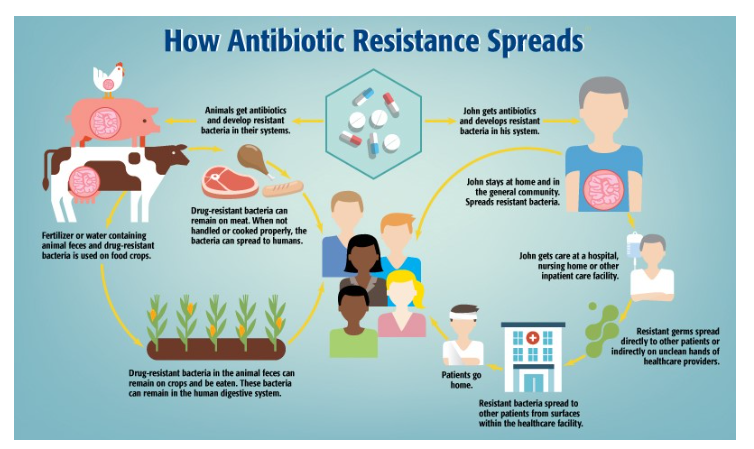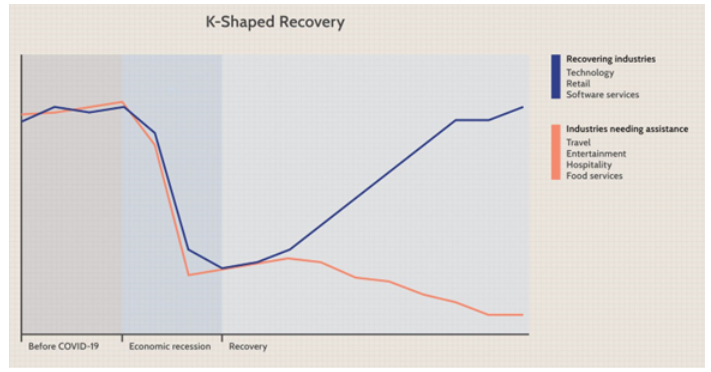Friday, 12th January 2024
Reservations Regarding the Insolvency and Bankruptcy Code of 2016
In News: The 2016 Insolvency and Bankruptcy Code (IBC) aims to maximize debtor asset value, promote entrepreneurship, and ensure timely case resolution, balancing stakeholder interests.
Concerns with the Insolvency and Bankruptcy Code, 2016
- Low Repayment Percentage
- The resolution plan approval process involves only around 15% payment.
- Repayment periods extend for years without additional interest for banks.
- Questions arise about the effectiveness of the repayment process.
- Settlement and Recovery
- Recent resolutions, like the Reliance Communications Infrastructure Ltd. (RCIL) case, show low settlement amounts and extended resolution periods.
- RCIL settlement was only 0.92% of debt, taking four years, surpassing the stipulated maximum of 330 days.
- Time-consuming processes for identifying defaults contribute to reduced recovery rates.
- Haircuts and Recovery Rates
- "Haircuts" involve writing off loans, benefiting promoters at the expense of banks.
- Borrowers and Insolvency Professionals (IPs) benefit, while lenders suffer, leading to low recovery rates.
- Owners are not declared insolvent, leaving depositors as the losers.
- Realizable Value
- The RBI's 2023 FSR highlights low realizable value for creditors.
- Banks recover only 10-15% in NCLT-settled cases, raising concerns about the recovery process.
- Minimal amounts realized from liquidations, with only 3% of claims admitted in 597 cases.
- Regulatory Concerns
- The FSR raises concerns about the Corporate Insolvency Process (CIRP).
- Admitted claims are less than dues, and creditors recover only a fraction of liquidation value and fair value.
- The Parliamentary Standing Committee report suggests a deviation from the original objective, citing low recovery rates and delays.
- Limited Judicial Bench Strength
- Shortage of judges hampers the IBC resolution process.
- Case processing decelerates, contributing to prolonged resolution times.
Key Highlights of the Insolvency and Bankruptcy Code, 2016
- About
- Provides a framework for resolving bankruptcy and insolvency.
- Addresses companies, individuals, and partnerships in a time-bound manner.
- Insolvency occurs when liabilities exceed assets, and bankruptcy is a legal declaration of inability to pay debts.
- Objectives
- Maximize debtor's asset value.
- Promote entrepreneurship.
- Ensure timely and effective resolution.
- Balance stakeholder interests.
- Facilitate a competitive market and economy.
- Provide a framework for cross-border insolvency.
- IBC Proceedings
- IBBI regulates insolvency proceedings.
- NCLT adjudicates proceedings for companies; DRT handles individual cases.
- Courts play a pivotal role in approving resolution processes.
- Procedure for Insolvency Resolution
- Initiated by debtor or creditor upon default.
- Insolvency professionals manage the process.
- 180-day period prohibits legal action against the debtor.
- CoC decides on debt revival, repayment, or liquidation.
- Liquidation Process
- Proceeds distributed to insolvency resolution costs, secured creditors, and other dues.
- Liquidation occurs if CoC fails to decide within 180 days.
Way Forward
- Implement measures for a higher repayment percentage.
- Set a maximum ceiling for credit to a single corporate house.
- Conduct a comprehensive review of IBC and NCLTs.
- Reevaluate the concept of "haircuts" and introduce safeguards.
- Enhance transparency in the resolution process with regular updates.
Source: TH
Varied Progress in Clean Air Target
In News: A recent study by Climate Trends and Respirer Living Sciences indicates that most cities are falling short of India's National Clean Air Programme (NCAP) clean air targets.
Key Study Highlights
- PM2.5 Reduction Disparities
- Out of 49 cities with consistent PM2.5 data over five years, only 27 experienced a decline.
- Four cities met or exceeded the targeted decline set by the National Clean Air Campaign (NCAP) Goals.
- NCAP aims for a 40% reduction in PM concentrations by 2026 in 131 cities.
- Mixed Progress Across Cities
- Varied progress observed; cities like Varanasi, Agra, and Jodhpur showed substantial PM2.5 reductions.
- Delhi reported marginal declines (5.9%), while Varanasi exhibited a remarkable 72% average decrease in PM2.5 levels.
- NCAP initially targeted a 20-40% reduction by 2024, later extending it to 2026.
- Regional Vulnerabilities
- Indo-Gangetic Plain (IGP) remains highly susceptible to elevated PM concentrations.
- 18 of the top 20 most polluted cities for PM2.5 are in the IGP, with exceptions like Guwahati and Rourkela.
- Monitoring Challenges
- Availability and distribution of continuous air quality monitors significantly impact pollutant concentration assessment.
- Many Indian cities lack an adequate number of monitoring stations.
- Mumbai and Delhi have several stations, but most cities have only a few; only four cities have more than 10 stations.
- Factors Impacting Pollution
- Pollution variations attributed to geographical locations, diverse emission sources, and meteorological influences.
- The interplay between emissions and meteorology necessitates further investigation.
National Clean Air Programme (NCAP)
- Launch and Objectives
- Launched in January 2019 by the Ministry of Environment, Forests, and Climate Change (MoEFCC).
- First-ever national framework for air quality management with a time-bound 40% reduction target in PM concentrations by 2026 in 131 cities.
- Coverage and Identification
- Covers 131 non-attainment cities identified by the Central Pollution Control Board (CPCB).
- Non-attainment cities fall short of National Ambient Air Quality Standards (NAAQS) for over five years.
- NAAQS and Pollutants
- NAAQS standards include PM10, PM2.5, SO2, NO2, CO, NH3, Ozone, Lead, Benzene, Benzo-Pyrene, Arsenic, and Nickel.
- PRANA (Portal for Regulation of Air-pollution in Non-Attainment cities) monitors NCAP implementation.
|
UPSC Previous Year Questions Prelims (2016) Q. In the cities of our country, which among the following atmospheric gases are normally considered in calculating the value of Air Quality Index?
Select the correct answer using the code given below: (a) 1, 2 and 3 only Ans: (b) Mains (2021) Q. Describe the key points of the revised Global Air Quality Guidelines (AQGs) recently released by the World Health Organisation (WHO). How are these different from its last update in 2005? What changes in India’s National Clean Air Programme are required to achieve revised standards? |
Source: TH
ISRO Tests Polymer Electrolyte Membrane Fuel Cell
In News: ISRO successfully tested a 100 W PEMFC Power System on the orbital platform POEM3.
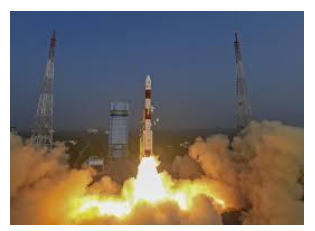
Major Takeaways from Recent PEMFC Test
- Technology Tested
- ISRO successfully tested a 100-watt class PEMFC.
- PEMFC converts hydrogen and oxygen into electricity, water, and heat.
- Advantages of PEMFC
- High Efficiency: PEMFCs offer significantly higher efficiency compared to batteries.
- Clean Operation: Produces only water as a byproduct, eliminating the need for complex waste management.
- Water Utilization: The water produced can be used onboard or for electrolysis to generate additional oxygen.
- Test Platform
- PEMFC tested on the orbital platform POEM3, launched aboard PSLV-C58 on January 1, 2024.
- POEM3 serves as a real-world testing ground for new space technologies.
- Implications for Future Missions
- Powering the Indian Space Station: PEMFCs' efficiency and water production make them suitable for the proposed Indian space station.
- Deep Space Exploration: PEMFCs offer a reliable and sustainable power source for long-duration missions to destinations like Mars.
- Note: ISRO qualified 10 Ah Silicon–Graphite anode-based Li-ion cells as an alternative.
Fuel Cell Overview
- About
- Fuel cell: Converts chemical energy of fuel and oxidant directly into electricity.
- Unlike batteries, fuel cells continuously produce electricity with a constant supply of fuel and oxidant.
- Major Types of Fuel Cells
- Polymer Electrolyte Membrane Fuel Cells (PEMFCs): Use a thin solid polymer membrane, suitable for portable applications.
- Solid Oxide Fuel Cells (SOFCs): Use a ceramic electrolyte, efficient but more complex than PEMFCs.
- Alkaline Fuel Cells (AFCs): Use a liquid electrolyte, less efficient but cost-effective.
- Applications of Fuel Cells
- Transportation: Power electric vehicles, boats, airplanes, and space missions.
- Portable Power: Fuel cells can power laptops, cell phones, and other portable devices.
- Stationary Power: Used to power homes, businesses, and entire cities.
|
UPSC Previous Year Questions Prelims (2010) Q. Hydrogen fuel cell vehicles produce one of the following as “exhaust” (a) NH3 Ans: (c) |
Source: TH
North Indian Fogging
In News: In the final days of 2023 and the beginning of 2024, numerous states in northern India experienced the descent of a dense fog, posing challenges for both residents and travelers.
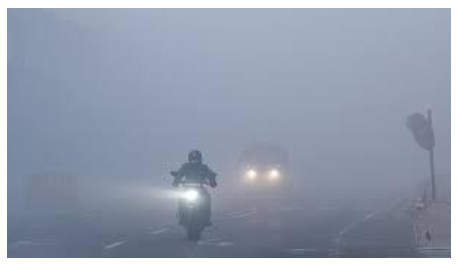
Background
- Foggy Conditions in Northern India (2023-2024)
- Thick fog enveloped several northern Indian states at the end of 2023 and start of 2024.
- Challenging conditions affected residents and travelers.
- Low temperatures and dense fog reported in various regions, impacting visibility.
- Weather Reports and Temperature Conditions
- Late December 2023 reports indicated minimum temperatures of 6-9 degrees C in Punjab, Haryana, and northern Rajasthan and Uttar Pradesh.
- New Delhi, south Rajasthan, and north Madhya Pradesh recorded minimum temperatures ranging from 10-12 degrees C.
- Dense fog reduced visibility in North India to as little as 50 meters for several days.
What is Fog?
- Definition and Formation
- Fog is a common weather phenomenon, consisting of small water droplets formed by cooled and condensed evaporated water.
- It is akin to a thick cloud close to the earth's surface.
- Formation occurs when there's a temperature disparity between the ground and the air, especially during Indian winters.
- Mechanism and Types
- Fog formation involves mechanisms like Infrared Cooling, occurring during the transition from summer to winter.
- Another type is radiation fog, prevalent when a warm, humid day precedes rapidly dropping temperatures.
- Fog type, duration, and effects depend on various environmental conditions.
Why is North India Prone to Fog?
- Geographical Factors
- The entire Indo-Gangetic plains, including North India, are prone to fog during winter.
- Conditions like low temperatures, low wind speed, moisture availability, and abundant aerosols contribute.
- Western Disturbances from the Mediterranean and moisture from the Arabian Sea impact the region.
- Himalayan Influence
- The Himalayas act as a barrier, preventing eastward movement of fog over the plains.
- Concentration of fog occurs over the Indo-Gangetic region.
- Delhi's Unique Situation
- Delhi experiences added challenges due to air pollutants, contributing to the formation of smog (smoke fog).
- Particulate matter exacerbates fog-related issues in the region.
Source: TH
Spiral Galaxies
In News: The Hubble Space Telescope has recently photographed the spiral galaxy MCG-01-24-014, unveiling the mysterious allure of what is commonly referred to as 'forbidden' light.
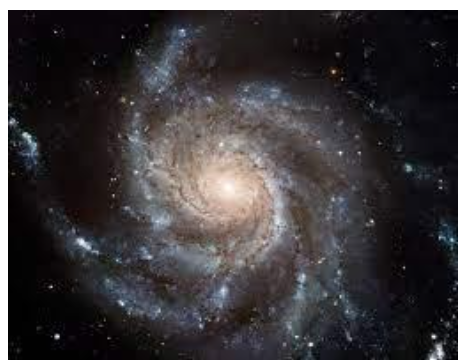
About Spiral Galaxies
- Spiral galaxies are intricate formations of stars and gas, often displaying captivating shapes and primarily composed of hot, youthful stars.
- Unlike the elliptical and irregular galaxy shapes, spiral galaxies constitute the majority of galaxies discovered by scientists, accounting for about 60% of them.
- The Milky Way, which encompasses Earth and our solar system, serves as an example of a spiral galaxy.
Structure
- Typically, spiral galaxies feature a central bulge surrounded by a flat, rotating disk of stars.
- The central bulge comprises older, fainter stars and is believed to house a supermassive black hole.
- Additionally, approximately two-thirds of spiral galaxies, including the Milky Way, exhibit a bar structure through their center.
- The disk of stars encircling the bulge extends into arms that gracefully spiral around the galaxy.
- These spiral arms are rich in gas, dust, and younger stars that emit bright light before their relatively short lifespans.
- It is theorized that spiral galaxies undergo an evolutionary process, transforming into elliptical galaxies as the spirals age.
Source: IT
Nanoplastic Contamination in Bottled Water
In News: A recent study in the United States exposes a concerning truth about bottled water, revealing the existence of hundreds of thousands of nanoplastic particles, emphasizing possible health hazards.
About the study
- Bottled water contains a significant amount of nanoplastic particles, ranging from 110,000 to 370,000 per liter.
- Approximately 90% of these particles are nanosized, posing a higher health risk.
- Nanoplastics, smaller than microplastics, are below 1 micrometer in size.
- Unlike larger microplastics (5 millimeters to 1 micrometer), nanoplastics can directly enter the bloodstream from the intestines and lungs, reaching vital organs such as the heart and brain.
- Common plastics found in bottled water, including polyamide, polypropylene, polyethylene, polyvinyl chloride, and polyethylene terephthalate (PET), contribute significantly to micro-nano plastic exposure.
- PET, commonly used in disposable beverage bottles, may leach into water when exposed to heat or pressure.
Source: NYT
Carbon Border Adjustment Mechanism (CBAM)
In News: India has raised concerns about the potential compromise of sensitive trade data of its exporters while adhering to the European Union's Carbon Border Adjustment Mechanism (CBAM).
About Carbon Border Adjustment Mechanism (CBAM)
- Definition
- CBAM is a proposed tariff by the European Union (EU) on carbon-intensive products.
- Purpose
- Aimed at pricing carbon emissions during the production of carbon-intensive goods entering the EU, encouraging cleaner industrial practices in non-EU countries.
- Adoption and Transition Period
- Adopted on May 17, 2023.
- CBAM transitional period commenced on October 1, 2023.
- Objective
- Counter the risk of carbon leakage by imposing a charge on embedded carbon content in certain imports, equivalent to the domestic carbon price.
- Implementation Details
- EU importers, under the proposed plan, need to purchase carbon certificates matching the EU's carbon price for locally produced goods.
- Certificate prices determined by EU carbon credit market auction prices.
- Annual certificate requirements based on imported goods quantity and embedded emissions.
- Exemptions
- Companies in countries with a domestic carbon pricing regime equivalent to the EU may export to the EU without CBAM certificates.
- Initial Impact on Goods
- Initially affects highly carbon-intensive goods from non-EU countries, including specified items in cement, electricity, fertilizers, aluminum, iron, steel, and hydrogen sectors.
- Transition Period (October 1, 2023, to December 31, 2025)
- Reporting obligation without financial obligations for affected companies.
- Importers must document direct and indirect emissions during production.
- Quarterly CBAM reports required, detailing imported quantities, direct and indirect embedded emissions (initially for cement, electric power, and fertilizer), and carbon taxes paid in the country of production.
- Certificate Trading (Starting January 1, 2026)
- Importers obligated to purchase sufficient emission allowances for imported embedded emissions during the year.
Source: IE
Momentum Investing
In News: Numerous academic studies have demonstrated that momentum investing has the potential to yield impressive returns, outperforming benchmark indices.
Momentum Investing Overview
Definition
- Style of investing involving the purchase of assets with rising prices and selling those with falling prices.
- Investor Approach
- Buy High, Sell Higher
- Investors focus on assets with upward price momentum, anticipating the continuation of the trend for future profits.
- Sell Falling Assets
- Conversely, they sell assets with declining prices, expecting the trend to persist.
- Buy High, Sell Higher
- Philosophy Basis
- Trend Recognition
- Built on the belief that discernible trends exist in asset prices, and these trends tend to endure.
- Profit Opportunity
- Investors aim to identify and participate in trends early to capitalize on potential significant profits.
- Trend Recognition
- Analysis Approach
- Limited Fundamental Analysis
- Momentum investors typically forego in-depth analysis of fundamental or intrinsic asset value.
- Price Trend Focus
- Investment decisions are solely based on the observable strong trend in asset prices, either upward or downward.
- Limited Fundamental Analysis
- Contrast to Traditional Advice
- Buy High, Sell Higher Philosophy
- Momentum investing contrasts with the traditional advice of "buy low, sell high" often given to investors.
Source: TH
Henley Passport Index 2024
In News: The 2024 Henley Passport Index reveals that the average number of destinations accessible without a visa has nearly doubled since 2006.
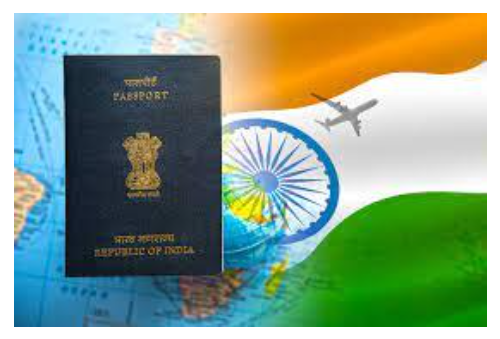
Henley Passport Index Overview
- Definition
- Original and authoritative ranking of world passports based on the number of destinations accessible without a prior visa.
- Evolution
- Origin
- Commenced in 2006 as the Henley & Partners Visa Restrictions Index (HVRI).
- Data Source
- Relies on exclusive data from the International Air Transport Association (IATA) and Henley & Partners' research team.
- Origin
- Coverage
- Passports and Destinations
- Encompasses 199 passports and 227 travel destinations globally.
- Visa-Free 'Score'
- The number of countries a specific passport grants visa-free access determines its score.
- Passports and Destinations
Henley Passport Index 2024 Highlights
-
- Leading Passports
- France, Germany, Italy, Japan, Singapore, and Spain secure the top spot, offering visa-free entry to 194 global destinations.
- Dominance of European Countries
- The top 10 is predominantly occupied by European nations.
- Global Average
- The average visa-free destinations nearly double from 58 in 2006 to 111 in 2024.
- Leading Passports
- Country-Specific Rankings
- India
- Ranked 80th, allowing citizens visa-free travel to 62 countries.
- Lowest Rankings
- Afghanistan, Syria, Iraq, and Pakistan hold the bottom positions with limited visa-free access.
- UAE
- Exhibits the fastest climb over the past decade, securing 11th place and offering visa-free access to 183 destinations.
- India
Source: HT
Kateel Yakshagana Mela
In News: Following approval from the Karnataka High Court, a Yakshagana mela in Dakshina Kannada, with a century-old legacy, will recommence its all-night performances.
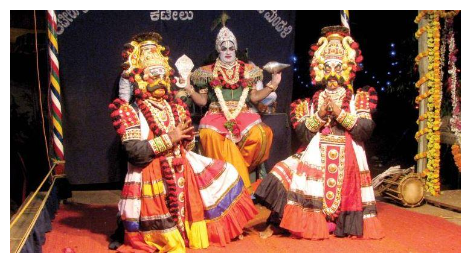
About Kateel Yakshagana Mela
- Origins
- Establishment-Founded in the mid-19th century.
- Name-Kateel Sri Durgaparameshwari Yakshagaana Dashavatara Mandali, commonly known as Kateel Mela.
- Significance
- Harake Seva Troupe-Plays a crucial role as a 'Harake Seva' Yakshagana troupe, catering to devotees' requests for shows to fulfill vows or desires.
- Performance Requests
- Devotee Vows (Harake)-Performs on the request of devotees who have taken vows to organize a Yakshagana show as an offering or service.
Key Facts about Yakshagana
- Traditional Folk Dance
- Geographical Origin-Popular in Coastal Karnataka.
- Art Form-A blend of dance, music, song, scholarly dialogues, and vibrant costumes.
- Gender Representation-Traditionally male-dominated, but contemporary troupes may include women.
- Troupe Composition
- Size-Typically consists of 15 to 20 actors and a Bhagawatha.
- Bhagawatha Role-Master of ceremonies and main storyteller.
- Elements of Yakshagana
- Performance Structure
- Sub-Stories-Each performance focuses on a small sub-story or 'Prasanga' from Hindu epics like Ramayana or Mahabharata.
- Dual Presentation-Combines stage performances by artists with commentary by the lead singer or Bhagawatha.
- Musical Accompaniment
- Instruments- Chande (drums), Harmonium, Maddale, Taala (mini metal clappers), and flute are commonly used.
- Costumes
- Uniqueness-Elaborate costumes with large headgear, colored faces, and musical beads on the legs (Gejje).
- Performance Structure
Source: TH
World Economic Situation and Prospects Report for 2024
In News: The 2024 United Nations World Economic Situation and Prospects report predicts a global decline in inflation, yet cautions about a simultaneous increase in food inflation, especially in developing countries.
Key Highlights of the World Economic Situation and Prospects Report for 2024
- Global GDP Growth
- The report projects a slowdown in global GDP growth, declining from an estimated 2.7% in 2023 to 2.4% in 2024.
- Developing economies, grappling with pandemic-induced losses, face challenges such as high debt and investment shortfalls.
- Low-income and vulnerable nations are expected to experience moderate growth due to factors like high-interest rates, geopolitical conflicts, slow international trade, and climate-related calamities.
- India’s Perspective
- South Asia, growing at 5.3% in 2023, is set to increase by 5.2% in 2024, primarily driven by India's robust expansion.
- India's projected growth is 6.2% in 2024, supported by domestic demand and growth in manufacturing and services.
- Inflation
- Global inflation shows signs of easing, dropping from 8.1% in 2022 to an estimated 5.7% in 2023 and projected to decline further to 3.9% in 2024.
- Despite this, food price inflation remains critical, exacerbating food insecurity and poverty, especially in developing countries.
- Climate Change
- Extreme weather conditions in 2023 led to devastating impacts on infrastructure, agriculture, and livelihoods.
- Climate change projections suggest a potential 10% reduction in global GDP by 2100, emphasizing the need for mitigation efforts.
- Investment
- Global investment growth is expected to remain low due to economic uncertainties, high debt burdens, and rising interest rates.
- Developing countries face challenges like capital flight and reduced foreign direct investment.
- Labour Market
- Divergent trends between developed and developing countries post-pandemic, with developed countries experiencing robust recovery and low unemployment rates.
- Challenges include real income losses, labor shortages, informal employment, gender gaps, and high youth unemployment.
- AI Impact on Global Employment
- AI adoption has rapidly advanced since 2022, with one-third of global firms using generative AI.
- AI could impact low-skilled jobs, with a significant gender gap in AI professions.
- Trade
- Global trade growth weakened to 0.6% in 2023, expected to recover to 2.4% in 2024.
- Factors impeding global trade include a shift in consumer spending, geopolitical tensions, supply chain disruptions, and lingering pandemic effects.
- International Finance and Debt
- Rising external debt and increased interest rates hinder developing countries' access to international capital markets.
- Debt sustainability becomes a critical concern, requiring restructuring and relief efforts.
- Multilateralism and Sustainable Development
- Emphasis on strengthened global cooperation, particularly in climate action, sustainable development financing, and addressing debt sustainability challenges.
- Multilateralism plays a critical role in navigating the global economic landscape and achieving Sustainable Development Goals (SDG).
Source: TH
India-Maldives Relationship
In News: The article discusses the recent diplomatic tensions arising from the visit of the Indian Prime Minister to Lakshadweep, which has led to controversy in the relations between India and Maldives.
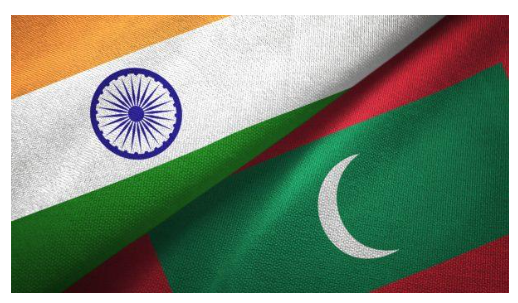
Significance of India-Maldives Relationship
Strategic Importance
- Neighbourhood First Policy Focus
- Maldives' strategic location in the Indian Ocean makes it a focal point for India's Neighbourhood First Policy.
- Proximity to India's west coast and its role in commercial sea lanes contribute to its strategic significance.
- India as First Responder
- Historical instances, such as Operation Cactus in 1988 and swift responses during crises, establish India as a reliable first responder.
- Collaboration in addressing events like the 2004 Tsunami and the water crisis in 2014 further solidifies bilateral trust.
- Net Security Provider
- Recognized as a Net Security Provider, India plays a crucial role in maintaining safety and security in the Indian Ocean Region.
- Joint exercises and defense partnerships contribute to the Security And Growth for All in the Region (SAGAR) vision.
Economic and Trade Engagements
- Tourism Economy
- India's significant contribution to Maldives' tourism sector, with 2023 seeing the largest number of Indian tourists.
- Bilateral trade surpassing USD 300 million and the signing of currency swap agreements enhance economic ties.
- Development and Capacity Building
- Infrastructure projects like the Greater Male Connectivity Project (GMCP) and the Hanimaadhoo International Airport Development.
- India's contributions in healthcare, education, and defense training underscore development and capacity-building efforts.
- Cultural Connectivity
- Deep-rooted ethnic, linguistic, and cultural links between India and Maldives.
- The presence of a substantial Indian expatriate community and shared historical linguistic roots strengthen cultural bonds.
Key Issues in the India-Maldives Relationship
- Lakshadweep Issue
- Recent controversy surrounding derogatory comments by Maldivian ministers regarding India's presence in Lakshadweep.
- Impact on tourism and the broader implications of hypernationalism in the region.
- India Out Campaign
- Opposition to India's involvement, manifested in the 'India Out' initiative.
- Divergence in policies, with the new government expressing reservations about Indian defense presence.
- Sovereignty and Security Dilemma
- Differing perspectives on Indian military presence, with the opposition considering it a threat to sovereignty.
- Balancing national security concerns against potential antagonism from the 'India Out' campaign.
- Hydrographic Survey Agreement Revocation
- Maldives' decision to revoke the agreement, citing concerns about intelligence collection.
- Implications for bilateral cooperation in maritime security.
- China Factor
- Growing Chinese influence, marked by significant investments and participation in the Belt and Road Initiative (BRI).
- Setbacks in the relationship, including the Free-Trade Agreement (FTA) and potential concerns about a Chinese naval base.
The Way Forward
- Discover and Develop Tourism Destinations in India
- Exploring undiscovered beach destinations along India's coastline.
- Investment in infrastructure and enhanced connectivity for tourist accessibility.
- Step into the Footsteps of the Gujral Doctrine
- Prioritizing diplomatic dialogues for addressing concerns and building trust.
- Strengthening regional alliances and engaging with the local population to counter the 'India Out' campaign.
- Unwavering Support for Capacity Building Programs
- Continued support for Maldives' socio-economic development and democratic institutions.
- Meeting the aspirations of the Maldivian people through collaborative initiatives.
- Apply Prudence in International Affairs
- Advising smaller nations to exercise prudence in dealing with neighbors.
- Avoiding needless provocations for maintaining positive diplomatic relations.
- Craft a Comprehensive Indian Ocean Strategy to Counter China
- Maximizing maritime security efforts to ensure freedom of navigation.
- Active participation in regional security initiatives, including humanitarian assistance and disaster relief.
Conclusion
Despite occasional controversies, the enduring regional and geopolitical significance of India emphasizes the paramount importance of fostering relations with the Maldives. A coordinated approach aligning India's 'Neighbourhood First' policy with the Maldives' 'India First' approach is crucial for a mutually beneficial partnership.
|
UPSC Previous Year Questions Prelims (2014) Q. Which one of the following pairs of islands is separated from each other by the ‘Ten Degree Channel’? (a) Andaman and Nicobar Ans: A Mains (2013) Q. Discuss the political developments in the Maldives in the last two years. Should they be of any cause for concern to India? |
Source: IE
Share the article
Edukemy’s Current Affairs Quiz is published with multiple choice questions for UPSC exams
MCQ
Get Latest Updates on Offers, Event dates, and free Mentorship sessions.

Get in touch with our Expert Academic Counsellors 👋
FAQs
UPSC Daily Current Affairs focuses on learning current events on a daily basis. An aspirant needs to study regular and updated information about current events, news, and relevant topics that are important for UPSC aspirants. It covers national and international affairs, government policies, socio-economic issues, science and technology advancements, and more.
UPSC Daily Current Affairs provides aspirants with a concise and comprehensive overview of the latest happenings and developments across various fields. It helps aspirants stay updated with current affairs and provides them with valuable insights and analysis, which are essential for answering questions in the UPSC examinations. It enhances their knowledge, analytical skills, and ability to connect current affairs with the UPSC syllabus.
UPSC Daily Current Affairs covers a wide range of topics, including politics, economics, science and technology, environment, social issues, governance, international relations, and more. It offers news summaries, in-depth analyses, editorials, opinion pieces, and relevant study materials. It also provides practice questions and quizzes to help aspirants test their understanding of current affairs.
Edukemy's UPSC Daily Current Affairs can be accessed through:
- UPSC Daily Current Affairs can be accessed through Current Affairs tab at the top of the Main Page of Edukemy.
- Edukemy Mobile app: The Daily Current Affairs can also be access through Edukemy Mobile App.
- Social media: Follow Edukemy’s official social media accounts or pages that provide UPSC Daily Current Affairs updates, including Facebook, Twitter, or Telegram channels.

